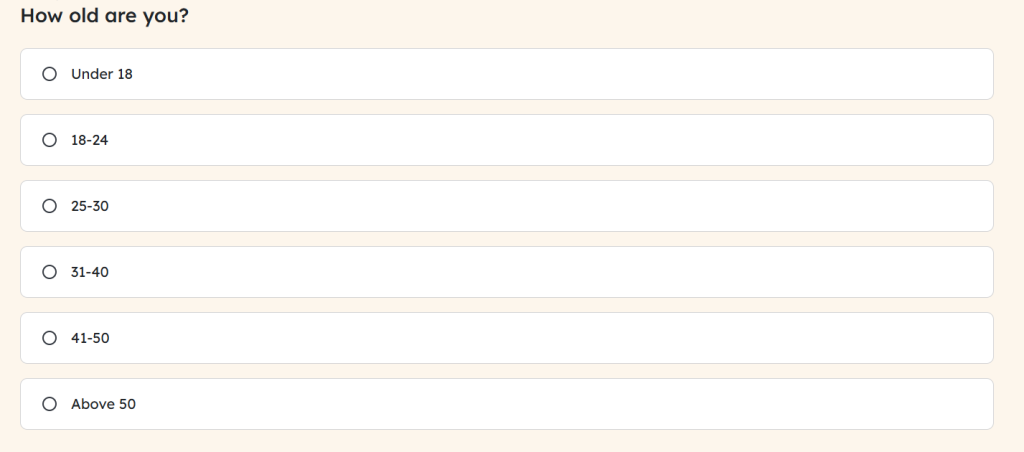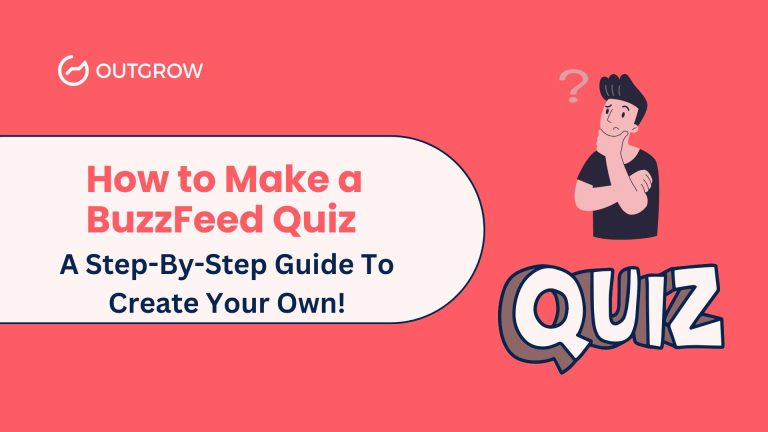Attachment Style Quiz: Discover Your Relationship Patterns in 5 Minutes!
Table of Contents
Ever wonder why you keep hitting the same walls in your relationships? Or why your partner’s need for space makes you spiral into anxiety? The answer might be hiding in your attachment style.
Your attachment style shapes everything from how you handle conflict to whether you text back immediately or wait three days. It’s the invisible blueprint that determines if you run toward connection or away from it.
Here’s what most people miss: attachment styles aren’t personality types. They’re adaptive strategies you learned before you could even talk. And once you understand yours, relationships stop feeling like unsolvable puzzles.
What Is an Attachment Style Quiz?
An attachment style quiz measures how you connect with others in close relationships. Think of it as a relationship GPS that shows you where you are right now and why you keep taking certain turns.
The quiz is based on attachment theory, developed by psychologist John Bowlby in the 1950s. He noticed that babies develop different strategies for getting their needs met, depending on how their caregivers respond. These patterns stick around into adulthood, affecting romantic relationships, friendships, and even work dynamics.
Most quizzes identify four main attachment styles:
Secure attachment means you’re comfortable with closeness and independence. You trust others and don’t panic when your partner needs space.
Anxious attachment shows up as craving closeness but worrying about rejection. You might check your phone constantly or need frequent reassurance.
Avoidant attachment makes you value independence above connection. You might feel suffocated by emotional intimacy or dismiss the importance of relationships.
Disorganized attachment combines both anxious and avoidant patterns. You want closeness but fear it at the same time, creating a push-pull dynamic.
Research shows that about 50% of people have secure attachment, while the other half is split between anxious, avoidant, and disorganized styles. Your style affects relationship satisfaction, conflict resolution, and even physical health outcomes.
Why Taking an Attachment Style Quiz Matters
Most relationship advice assumes everyone operates the same way. But what works for secure attachers backfires for anxious or avoidant ones.
Taking an attachment style quiz gives you three game-changing insights:
Pattern recognition becomes possible. That fight you had last week? Not about dirty dishes. It’s about your avoidant partner pulling away when things get too close. Or your anxious response, interpreting normal distance as rejection.
Self-blame decreases. When you realize your attachment style is an adaptive response to early experiences, not a character flaw, shame loses its grip. You’re not “too needy” or “emotionally unavailable.” You’re running an outdated program that once kept you safe.
Targeted change becomes feasible. Generic advice like “communicate better” doesn’t cut it. But attachment-based strategies work because they address root causes. Anxious attachers need different tools than avoidant ones.
The quiz results also predict relationship outcomes. Secure attachment correlates with longer, more satisfying partnerships. Anxious-avoidant pairings (the classic “pursuer-distancer” dynamic) create the most friction without intervention.
You can also explore other personality quizzes to gain deeper self-awareness beyond attachment patterns.
How to Take an Attachment Style Quiz
Most attachment style quizzes take 5-10 minutes and ask about 15-30 questions. Here’s how to get accurate results:
Answer based on your typical patterns, not your best or worst moments. Don’t answer how you wish you were or how you acted in one toxic relationship. Focus on your usual responses across multiple relationships.
Consider your romantic relationships specifically. Your attachment style with friends or family might differ from romantic partners. Most quizzes focus on romantic attachment since that’s where these patterns show up strongest.
Be honest about uncomfortable truths. The quiz can’t help you if you’re performing for it. No one sees your answers, so skip the ego protection.
Questions You’ll Encounter
Typical questions look like this:
1. Relationship Status – We start by understanding the relationship context you’re currently in. This helps us interpret how your attachment patterns show up in real life, whether you’re exploring connection, building it, or navigating it with a partner.

2. Age Group – Your age can shape how you form bonds, communicate, and respond to emotional needs. Different stages of life bring different attachment experiences, which help us fine-tune our results.

3. Location – Where you live can influence how you relate to others. Culture, environment, and social norms play a role in shaping communication, expectations, and emotional expression.

What Your Attachment Style Reveals About Your Relationships:
Your attachment style acts as a filter for relationship experiences. Two people in the same situation will react completely differently based on their attachment patterns.
If You Have Anxious Attachment
You experience relationships on high alert. Your brain interprets ambiguous signals as threats. When your partner says, “I need some alone time tonight,” you hear, “I’m pulling away and might leave.”
This creates a cycle: You seek reassurance, which can feel demanding to partners. They need space, which confirms your fears. You pursue more, they distance more.
The upside? You’re emotionally attuned, empathetic, and willing to work on relationships. You notice subtleties others miss. The work is learning that the connection doesn’t require constant contact.
If You Have Avoidant Attachment
You learned early that vulnerability gets punished or ignored. So you built walls. You’re the person who feels trapped by “we need to talk” conversations. Emotional intimacy feels like losing yourself.
You might intellectualize feelings, change the subject when things get deep, or maintain escape routes (keeping dating apps active, focusing on partner flaws).
The upside? You’re independent, self-sufficient, and don’t lose yourself in relationships. The work is recognizing that needing others isn’t a weakness.
If You Have Secure Attachment
Lucky you. Relationships feel manageable. You can ask for what you need without anxiety. You give partners space without assuming they’re leaving. Conflict feels like a problem to solve together, not a threat.
You likely had caregivers who were consistently responsive. This taught you that people are generally trustworthy and relationships are safe.
The work? Understanding partners with different styles and not taking their patterns personally.
If You Have Disorganized Attachment
You’re stuck in an approach-avoidance trap. You desperately want a connection, but it terrifies you. Getting close triggers panic. Staying distant triggers loneliness.
This often comes from early experiences where the person who should protect you was also the source of fear. Your nervous system never learned whether a connection means safety or danger.
The upside? Once you understand this pattern, change becomes possible. Many people move toward secure attachment with therapy and conscious relationship work.
Can You Change Your Attachment Style?
Yes. Attachment styles are stable but not fixed. About 25% of people shift attachment styles over their lifetime.
Change happens through two main paths:
Corrective relationship experiences rewire your expectations. If you’re anxious-attached and partner with someone secure who consistently shows up, your nervous system learns that the connection can be safe. If you’re avoidant and someone gently persists in wanting to know you, you might discover that vulnerability doesn’t destroy you.
Therapy targeting attachment patterns accelerates change. Attachment-based therapy helps you understand the origins of your style, identify triggers, and practice new responses. You can’t think your way out of attachment patterns (they live in the nervous system, not the prefrontal cortex), but therapy creates awareness that enables choice.
Techniques that work:
- Somatic therapy helps you notice and shift bodily responses to attachment triggers
- Couples therapy teaches secure-functioning skills
- Individual therapy builds self-awareness and emotional regulation
The goal isn’t becoming perfectly secure. It’s expanding your range of responses so you’re not locked into one pattern.
Using Your Results to Build Better Relationships
Knowing your attachment style is step one. Changing patterns requires action.
For Anxious Attachers
Build self-soothing skills. When you feel the panic rising (they haven’t texted back in two hours), pause. Your nervous system is screaming danger, but that doesn’t make it true. Try box breathing: inhale for four counts, hold for four, exhale for four, hold for four.
Challenge catastrophic thinking. Write down the story your brain is telling (“they’re definitely losing interest”) and generate three alternative explanations (“they’re in a meeting,” “they’re focused on work,” “they’ll text when they have space”).
Communicate needs directly instead of testing. Don’t send vague texts hoping they’ll read your mind. Try: “I’m feeling disconnected today. Can we talk tonight?” Direct requests work better than hoping they’ll intuit your needs.
For Avoidant Attachers
Practice staying present during emotional conversations. Notice your impulse to change the subject, joke, or intellectualize. Try staying with the discomfort for 30 seconds longer than feels comfortable.
Share small vulnerabilities. You don’t have to pour out your deepest fears on date three. Start tiny: “I felt nervous about meeting your friends.” Build the muscle gradually.
Recognize that needing others isn’t a weakness. Your self-reliance is a strength, but relationships require interdependence. Experiment with asking for help with something small.
For Both Styles
Name your pattern when it shows up. Tell your partner: “I’m noticing my anxious attachment getting triggered right now. I need some reassurance.” Or: “I’m feeling that avoidant urge to shut down. Give me ten minutes to process, then I’ll come back to this conversation.”
Choose partners with awareness. Anxious-avoidant pairings recreate your worst attachment fears. Two anxious people might amplify each other’s insecurity. Secure partners provide the most healing relationships.
Remember: different doesn’t mean wrong. Your partner’s attachment needs aren’t a criticism of yours. Avoidant partners pulling away isn’t personal rejection. Anxious partners seeking closeness isn’t clinginess. It’s just different wiring.
Just like understanding customer personas helps businesses connect better with their audience, understanding attachment styles helps you connect better with partners.
Attachment Style Testing in 2025
Attachment style quizzes aren’t going anywhere. They’ve become standard practice for anyone working on their relationships, whether you’re single and dating, married for decades, or just trying to understand why you keep repeating the same patterns. And the numbers prove it.
Attachment style quizzes pull in around 1.2M monthly visits, showing just how many people are actively trying to understand their relationship dynamics. This isn’t fringe psychology anymore; it’s mainstream self-awareness, and people are hungry for it.

Source: Similarweb
Right now, people want quick personalized insights delivered immediately. Whether for understanding why your partner’s behavior triggers you, figuring out dating patterns, or improving communication in your marriage, attachment quizzes deliver actionable information without the therapy price tag.
Coaches and therapists noticed too. Interactive attachment quizzes engage audiences way better than blog posts and convert casual website visitors into actual clients. The format works because it’s personal, revealing, and people genuinely want to understand themselves better.
How to Build an Attachment Style Quiz with Outgrow
With Outgrow’s quiz builder, you can create your own customized attachment style assessment. Tailor questions to your specific audience, add your branding, and collect leads while providing value.
What sets it apart: Full customization control. Create quizzes for dating apps, therapy practices, coaching businesses, or relationship blogs. You own the data and the user experience.
Creating your own attachment style quiz is easier than you think. Outgrow’s no-code platform lets you build professional quizzes without touching a single line of code.
Here’s the step-by-step process:
1. Account Setup
Create an Outgrow account (or log in if you already have one). The interface is straightforward; no developer is required.

2. Choose Your Format
Select “Attachment style” or “Assessment” from your dashboard. Outgrow offers customizable templates or blank starts if you’re feeling adventurous.

3. Design Types
Decide on your attachment category approach. Four types (Secure, Anxious, Avoidant, Disorganized) are the standard, but you could also measure dimensions:
- Attachment anxiety level (Low to High)
- Attachment avoidance level (Low to High)
- Security in relationships (Low to High)

4. Write Questions
Create 15-25 questions that measure attachment behaviors. For attachment-style approaches, cover:
- Comfort with emotional intimacy
- Fear of abandonment or rejection
- Need for independence vs connection
- Communication patterns under stress
- Trust in relationships

5. Configure Results Logic
Use Outgrow’s branching and scoring to assign types based on answers. Options include:
- Point values per answer
- Conditional paths to specific results
Combined scores across multiple categories

6. Launch and Integration
Outgrow simplifies embedding on websites, blogs, and landing pages. Connect it to:
- Email services (Mailchimp, Klaviyo)
- CRM platforms (HubSpot, Salesforce)
- Therapy practice management systems (SimplePractice, TherapyNotes)

7. Analyze and Improve
Track quiz performance in Outgrow’s analytics dashboard.
- Completion rates (where exactly do people drop off?)
- Most common attachment types emerging
- Traffic sources driving the best engagement
- Time spent on individual questions

Use this data to improve questions, adjust results, and try completely different formats. Keep refining based on actual user behavior, not assumptions.
Final Thoughts
The attachment style quiz isn’t just about getting a label to put in your dating profile. It’s about genuinely understanding why you operate how you do in relationships, what patterns keep tripping you up, and how to communicate effectively with differently-wired partners without constant misunderstandings.
Whether you take it for personal growth, relationship repair, dating success, or pure curiosity, the real benefit is self-awareness. You stop constantly criticizing yourself for being “too clingy” or “emotionally distant” and start genuinely appreciating your adaptive strategies while working to update the outdated ones.
Stop endlessly wondering about your attachment patterns. Take the quiz. Build your own. Turn self-discovery into something actively helping you (and your clients) show up authentically in relationships.
Want to see the platform in action? Start your free Outgrow trial and build your first attachment style quiz today.
Frequently Asked Questions About the Attachment Style Quiz :
Accuracy depends entirely on answer honesty and consistency. Most people find descriptions remarkably accurate, though you might relate to some neighboring style traits too. Consider it a useful starting point for self-exploration, not an absolute diagnosis carved in stone.
Yes. You might feel secure with friends but anxious in romantic relationships. Context and individual relationships affect how your attachment patterns show up in different scenarios. Your attachment style with your mom might look completely different from that with romantic partners.
Disorganized attachment combines anxious and avoidant patterns. Otherwise, most people have one primary style with traits of others that appear under stress or in specific relationships. You might be 70% anxious with 30% secure traits.
Keep them short, 15 to 25 questions maximum for attachment quizzes. Write conversationally and clearly, like talking to a friend. Show progress bars so people know how much longer. Make results genuinely valuable and extremely shareable. Test your quiz yourself and with several others before launching to catch confusion or technical issues.

Bhawna Singh is a Marketing Generalist at Outgrow. With a knack for building connections and a talent for crafting impactful blog content, she ensures every piece resonates with the audience. When not strategizing campaigns, Bhawna channels her artistic side by bringing melodies to life through her singing or creating vibrant masterpieces on canvas.





![Quiz Engagement Benchmarks: What’s a Good Completion Rate? [in 2025]](https://outgrow.co/blog/wp-content/uploads/2025/06/quiz-funnel-strategies-that-transform-email-drip-marketing-768x432.png)

